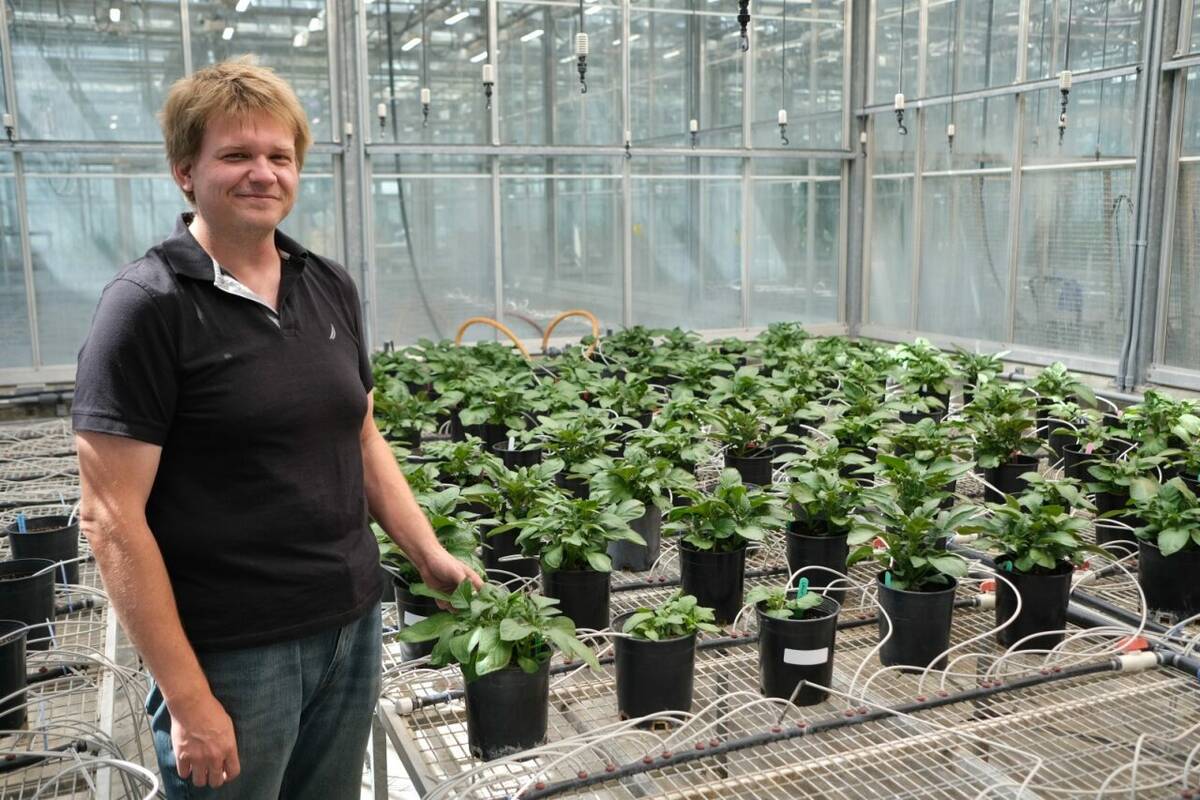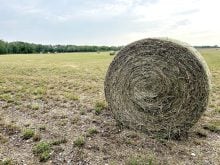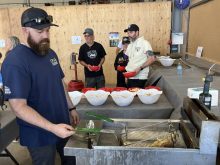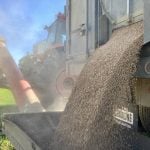Drones — technically called unmanned aerial vehicles (UAVs) — have matured from their days as just gee whiz military equipment to time- and money-saving tools in a wide range of industries, including agriculture.
In fewer than 10 years the Canadian civilian UAV industry has grown to around $750 million from almost nothing. MicroPilot, of Stony Mountain, Man. became a pioneer in low-cost UAVs almost by accident. Its goal was to show other companies it was possible to build a functional UAV for under $7,000 to create a market for its autopilot business.
Read Also

Hail research hopes to benefit potato growers
Alberta research scientist measures hail storm and heat dome affects on potato crops
“In the early 2000s, a UAV was expected to cost about the same as a manned plane,” says Pierre Pepin, of MicroPilot. “We based our UAV on a motorized model glider from the Czech Republic.”
The UAV, dubbed “CropCam,” has a six-foot wingspan and the camera is mounted in a pod suspended below the wing. It’s launched by throwing it into the wind. The wings and fuselage can be disassembled and packed in a rifle case for secure transport. It can glide to land on cropland or stubble safely. The CropCam has become a leading UAV especially in Southeast Asia and South America, where infrastructure is limited and costly.
Wine Hawk, which recently changed its name to Precision Hawk, was another early leader in low-cost crop surveillance. It has expanded from an automated plane protecting vineyards and other high-value crops from birds to focusing on data collection for precision agriculture, environmental monitoring, mining, forestry, engineering and geology. The new focus is in part less focus on the aircraft and more emphasis on collecting and processing data into information each industry wants.
You can even build your own UAV. Despite the high-tech image, you can safely run a purchased or home-built helicopter-type UAV with just a day or two of practice, according to Rory Paul, owner of Volt Aerial Robotics in St. Louis, Missouri. A hobby autopilot can cost as little as $200 and a kit to assemble a quad-rotor UAV starts at $600.
“People tend to discount what you can do with limited technology,” says Paul. “There’s no new technology in these units — just radio links, GPS and an autopilot. If you had the time and inclination you could build a unit like this for maybe $2,000. Once farmers see the benefits of this technology, we’ll see all sorts of innovation.”
Canada is a leader in the development and use of UAVs because regulation has developed along with the industry. The U.S. Federal Aviation Administration will produce its UAV regulation by the end of 2015. Until then, UAV fights are legal only if they’re for “research and development,” and a company is not allowed to offer commercial UAV services. Many states have legislation against UAVs to prevent surveillance.
In Canada, UAVs are being used to measure the volume of quarries, environmental monitoring — checking the health of fish habitat or the impact of an industrial site. First responders use UAVs in searching for people who are lost or hiding. A UAV can be safer in a hazardous environment and it can gather the information faster than people on the ground.
Regulations and training
Flying a UAV any bigger than a toy requires a special flight operations certificate (SFOC), from Transport Canada. An SFOC is basically an operations plan. Before issuing an SFOC, Transport Canada needs to know who you are and what training you have to enable you to operate the UAV safely, when, where and at what maximum altitude you plan to fly.
Transport Canada also wants details on your UAV, its weight and material to assess its potential hazard to other aircraft, and how you mitigate risks.
Stirling Cripps of the Canadian Centre for Unmanned Vehicle Systems in Medicine Hat runs a two-day ground school for UAV pilots. It covers the theory needed for UAV flying — aerodynamics, weather, radio communications for pilots and provides students with a radio licence — a requirement for aeronautical radio operation. Cripps has also produced a book that provides the basics you need to operate a UAV safely.














